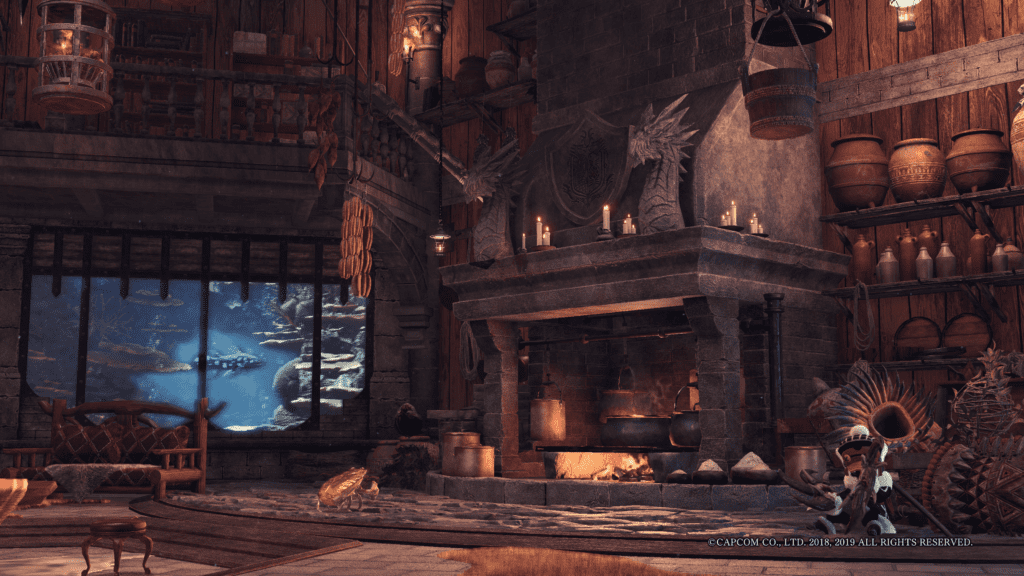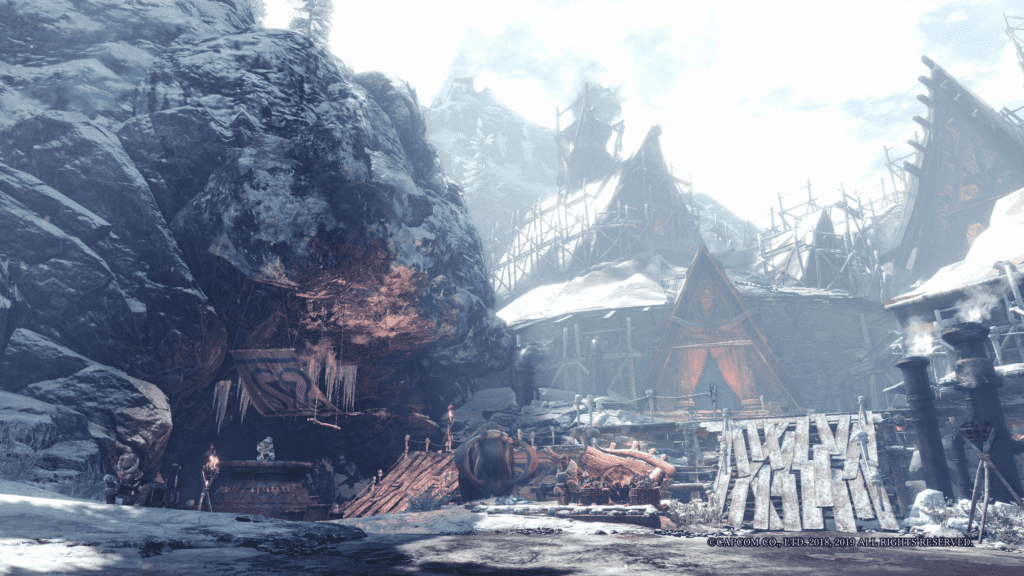After countless hours spent navigating the dockside sprawl, bouncing between armourer, canteen and botanist, it was easy to cast Astera aside in favour of newer pastures. With the release of Iceborne, the lavish standalone expansion of Monster Hunter: World, a fresh change of scenery was far more valuable than any number of coveted gems, shards or tickets. Leaving behind a spider-like maze of wood and rope for a quaint hamlet of stone and mortar, Seliana would serve as the next forward post for a second act of New World exploration. And much like the first, it was another chance to lose myself amidst a dizzying pursuit of riches, my existing chunk of capital second only to the rarified materials that it was useless in obtaining. Pushing back the borders of the established endgame, master rank succeeded high rank as hunting season resumed and the cobbling together of theoretical gear sets recommenced. Though long before reaching the forge and furnace, there was plenty yet to do that Iceborne had newly propositioned.
The concept of an endgame dictates that even after a narrative has ended, there is still substantial playtime stocked in focused character building. Much like many other multiplayer games that utilise RPG inspired gearing systems, the experience is dictated largely by chance and measured by your success in overcoming long odds. Identifying the trinket you need to compliment your build is rather simple, but actually obtaining it something altogether more taxing. The revitalised endgame of Iceborne isn’t all too different in this respect, comprised of familiar trappings and a well-worn gameplay loop. Collection supplies construction, which in turn bolsters your effectiveness in combat, the three elements all interlinked by necessity. One aspect doesn’t work without the other, and so in order to reap the rewards of successful hunting, you will need to make use of every avenue available to you. Everything from cultivating flowers to eating specific pre-fight meals serves the post-game, its linearity galvanised by supplementary systems and a freeing level of choice. Just as the base game proved, the inherent nature of a grind for gear doesn’t need to be synonymous with monotony. In Iceborne, this creed is reiterated all the more.
Returning to Monster Hunter following the release of Iceborne, I pored over my inventory and assessed the damage wrought by several hundred hours of unrepentant crown hunting. Meticulously organised but sparsely populated, my aid reserves were spent, no more than a handful of potions and powders yet remaining. In such situations, you’re typically left with only one option—gather the required materials at the expense of doing anything else. You can’t face down a monster without a stack of health potions, after all. There’s no escaping the crux of the grind, but where Monster Hunter differentiates itself is in how it keeps your focus locked on most important aspect of the post-game—the hunt itself. When it comes to creating many of the elixirs required to bolster your defence or invigorate your health recovery, your options aren’t just limited to foraging. If one ingredient in particular is eluding you, then you can cultivate it in the harvest box, with your yield increasing as you complete more quests in the meantime. If you’re in need of more standard hunting provisions, then you can purchase them in bulk directly from the requisitions shop. And should you require certain materials that would otherwise distract you from your current objective, then gangs of feline adventurers are ready to explore a location on your behalf when commanded. And that’s not to mention the rotating inventory of the Argosy merchant ship, trading with native Lynian tribes using the pawswap feature, or even indulging in the new steamworks mini-game that debuted in Iceborne. Chasing exactly what you’re looking for still brings no assurances of success, but with much of the menial work accounted for passively, you’re free to pursue exactly what you need without hindrance.
Time spent on the hunt is time valued, with recurrent progression remaining prominent even as you’re actively duelling with a monster. Monster tracks, for example, have a much greater impact on the endgame other than just helping populate your hunting journal. Collecting tracks when out in the field generates investigations, with these serving as a platform from which to hunt specific monsters to whatever extent you’d like. But the deeper you get into the endgame, the higher the stakes become. You’re always against the clock in Monster Hunter, striving to fell one or more targets within a 50 minute window and a limited number of faints. Where things get more complicated is in the wagering of greater rewards against more punishing failure conditions. A typical investigation will offer only a single high-tier reward for success, that is until track collecting becomes second nature. The more tracks you collect, the more investigations you generate. And more investigations to try means many more permutations that are available to choose from. The prospect of 5 high-tier rewards within a single investigation may be tantalising, but it’ll bring with it an appropriate challenge: multiple monsters, a shorter window of time, no leeway for even a single faint. It’s disappointing to have a quest end prematurely no matter the circumstances, though you rarely stand to gain absolutely nothing from the endeavour. It took me several defeats against the elder dragon Lunastra before I was able to counter her most devastating attack with better regularity. While even after being rolled back to camp on a cart three times in succession, I’ve been able to gather enough tracks to leave me in good standing for another dozen future hunts. It’s assuring to know that no matter how the coming fight treats you, the punishment for failure is only a single missed opportunity. After defeat, all that’s left is to arm up and go again.
All of that filters downward to the hunt itself, the New World bursting at the seams as it struggles to support so many monsters all vying for their own patch of territory. Even as World boasts such confidence in its supporting systems, it still banks on the strength of its gameplay being the foremost route into its endgame. In the wake of Iceborne, the game includes over 70 monsters spread across 6 regions, with little more than a dozen unique weapon types to choose from. And whether it’s gear building, weapon collecting or crown hunting that best appeals to you, there will be plenty of repeat encounters to come. It took me 120 attempts to finally pry both golden crowns from the panther-like Odogargon, time that I spent jumping between investigations, event quests and player SOS signals. It wasn’t without its frustration, but as my stacks of Odogaron materials raised ever higher, so did I become more efficient at fighting it.
The most valuable commodity in World isn’t a set of obsidian gauntlets glistening with venom, or a luminescent blade carved from crystalline scales. Most sought after time and again is the perfect hunt, one in which you perform so flawlessly that the monster facing you barely has a chance to mount a counterstrike. There are times when the monster you’re attacking just won’t go down, when it won’t give you even the slightest hint of an opening. Then, with little anticipation, a hunt which usually takes 20 minutes has been completed twice as quickly, your target unable to pry itself free from a four person assault, every player working flawlessly in tandem. In the build up to these moments, the ones where you feel as though you’ve achieved a new level of mastery over your opponent, there will likely be more faints and failures ahead of you. All you need to consider until then is what monster to take on next. To that end, there are plenty more snarling terrors out there willing to make use of every last potion you’ve got left.

